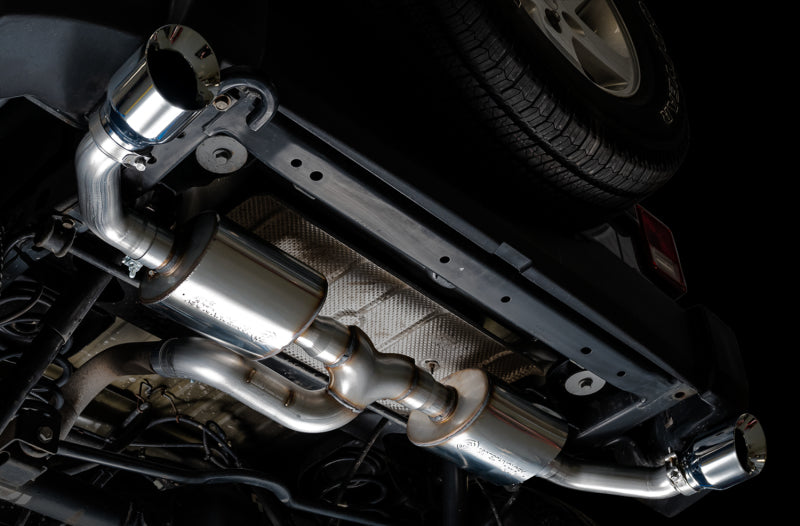









 CHRYSLER 300 / 300C PARTS
CHRYSLER 300 / 300C PARTS
 DODGE CHALLENGER PARTS
DODGE CHALLENGER PARTS
 DODGE CHARGER PARTS
DODGE CHARGER PARTS
 DODGE DURANGO PARTS
DODGE DURANGO PARTS
 DODGE MAGNUM PARTS
DODGE MAGNUM PARTS
 DODGE NEON SRT4 PARTS
DODGE NEON SRT4 PARTS
 DODGE RAM PARTS
DODGE RAM PARTS
 JEEP GRAND CHEROKEE PARTS
JEEP GRAND CHEROKEE PARTS
 JEEP WAGONEER PARTS
JEEP WAGONEER PARTS
 BRAKE PARTS
BRAKE PARTS
 ENGINE PARTS
ENGINE PARTS
Buyers Guides
 LIGHTING PARTS
LIGHTING PARTS
 SUPERCHARGER KIT
SUPERCHARGER KIT
Buyers Guides
 WHEEL SPACER
WHEEL SPACER
 SWAG
SWAG
 GIFT CERTIFICATES
GIFT CERTIFICATES











AWE 3015-32003 Tread Edition Axle-Back Exhaust (Dual Rear Exit, Polished Tips) for 12-18 Jeep Wrangler JK 3.6L V6. The exhaust is designed as a straight-through axle-back system for rugged performance, featuring AWE’s patented 180 Technology® to deliver a rich, drone-free exhaust note at all speeds without sacrificing drivability, resulting in an aggressive roar on throttle and stock-level cabin volume on the highway.
Out of stock
Couldn't load pickup availability

MOST orders over $250 ship free*

100% Authorized Direct Retailer

Inventory updated throughout the day











AWE 3015-32003 Tread Edition Axle-Back Exhaust (Dual Rear Exit, Polished Tips) for 12-18 Jeep Wrangler JK 3.6L V6. The exhaust is designed as a straight-through axle-back system for rugged performance, featuring AWE’s patented 180 Technology® to deliver a rich, drone-free exhaust note at all speeds without sacrificing drivability, resulting in an aggressive roar on throttle and stock-level cabin volume on the highway.
12-18 Jeep Wrangler JK 3.6L V6
3015-32003
The Jeep Wrangler exhaust that will sound good no matter where you are on the planet.
Handcrafted from US-made 3” and 2.5” T304L stainless steel, the Tread Edition is a straight-through axle-back configuration for drivers looking for rugged performance and a drone-free, signature exhaust note without sacrificing daily-drivability.
The Tread Edition features AWE’s patented, drone-canceling 180 Technology®, which provides the JK/JKU with a sophisticated, full-bodied soundtrack completely controllable via the throttle. With increased throttle, the Wrangler roars with aggression, but at highway speeds, the cabin is free of any drone, and volume is similar to stock.
Perfect tone, compliments of AWE 180 Technology®.
As exhaust gases exit the 3.6L engine and flow into an AWE 180 Technology® equipped resonator, they pass through strategically located ports, and into reflection chambers. Sound waves, carried by these exhaust gasses, bounce off the walls of the reflection chambers. By controlling the size and location of the ports and the chambers, we also control when the sound waves exit the chambers. The specific timing of when the reflected sound waves rejoin the main exhaust flow creates a one-hundred-and-eighty-degree out-of-phase sound wave that cancels out problematic frequencies.